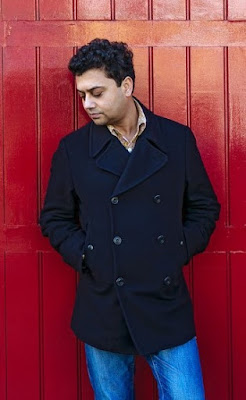A Review of Rikki Ducornet’s
Brightfellow
Originally published in the
Rain Taxi Review of Books, Fall 2016
By Rikki Ducornet
Coffee House Press ($15.95)
Novelist, poet, essayist, illustrator, children’s-book
author, and all-around magical artificer Rikki Ducornet has been dazzling
readers for more than four decades with her wildly inventive literary
landscapes, her variegated works often eliciting comparisons to such polymaths
as Jorge Luis Borges, the Marquis de Sade, Lewis Carroll, and Angela Carter.
Her best works—especially her second novel, Entering
Fire, and her two turn-of-the-millennium novels, The Fan-Maker’s Inquisition and Gazelle—defy
even these affinities, as all great books must. Ducornet’s is an uneven genius,
however, and her misfires can be disconcerting. Her newest novel, Brightfellow, swerves between highs and
lows, offering her devotees a number of precious glimpses into her inspired
inner regions while frustrating readers who might not know where to put their
foot down in such an oddly balanced topography.
Brightfellow
follows a wounded boy named Stub through his precarious childhood—which
includes a formative episode when his parents stick him with a mentally ill
nanny who introduces him to the work of a bizarre semi-mystical writer/artist
named Verner Vanderloon—and then into young adulthood, when he runs away to
live as a transient on the local university campus. Perhaps too coincidentally,
Vanderloon had been a professor at the school and upon retirement had left his
papers in a special collection in its library. Further chance brings the
circumspect Stub into contact with emeritus professor Billy Sweetbriar, who
knew Vanderloon. Within days he offers Stub—who upon meeting Billy chooses to
call himself Charter Chase—a place to stay at his house while Stub/Charter
works on his ostensible Fulbright project. Amazingly, Stub’s room at Billy’s
house affords him a direct view into the bedroom of the eight-year-old girl
he’s been fascinated with above all the other “campus brats,” a girl named Asthma
who’s conspicuously in the Dantean ninth year of her life.
Ducornet breezes through these coincidences blithely, but
what really rankles is how she treats Stub/Charter’s existence as a kind of
game. As anyone who’s been homeless knows, unstable subsistence is far more
dangerously uncertain than any linguistic juggling act. Stub becomes a
brilliant thief, but despite Ducornet’s exuberant inventiveness, the
practicalities of his day-to-day survival are totally unconvincing and keep the
reader from investing in the gravity of his struggle. The worst turn comes
when, finally in the luxurious cradle of Billy’s campus house, Stub/Charter
decides to improvise a fraudulent research project for which he invents an
entire Pacific-island people for Vanderloon to have discovered and documented,
fabricating reams of notes and creating an entire language and mythology that
he regales Billy with over dinners—as if any homeless person would ever play
games with his meal ticket, or with his very ability to remain in his university
universe, especially when his host is a Romance-language specialist who would
easily see through his half-baked philological extemporizations. Ducornet has
always brilliantly thumbed her nose at traditional realism, but this novel’s
momentum simply doesn’t pull off the magic to bend its reality like this, the
flippancy of its development betraying a classist bent that assumes that its
readers have never been hungry.
Reviewing Brightfellow
from end to beginning, as we’re meant to, a different pattern emerges. As in
G.K. Chesterton’s The Man Who Was
Thursday, Charter’s pursuit of Vanderloon compels him through a series of
escalations that vacillate between reverence and blasphemy, to arrive at
an elusive prime mover whose surprise appearance somehow works as an ex post facto reconciliation of the
book’s impossible progressions. Mocking and aping his deity (or is his creator
merely a gnostic demiurge?), Charter has renamed himself and has even created
his own apocryphal testament, but he inexorably charts and chases his
inspiration toward ends that may or may not justify the novel’s tortuous means.
As in Cormac McCarthy’s Chestertonian Blood
Meridian, the mystical denouement reconfigures the entire novel, and the
results are similarly mixed.
Brightfellow’s
success or failure doesn’t just hinge on whether this back-to-front redirection
works, of course. Ducornet’s prose almost always transcends her narrative
missteps, and her twistedly inspired reflections upon this novel’s field of
play make for a brilliantly illuminating funhouse to get lost in. As Charter surreptitiously
observes his darling Asthma—his stolen-spyglass furtiveness like a fusion of
Vladimir Nabokov’s creepers Humbert Humbert and Charles Kinbote—his influence on her escapes his fumbling grasp so drastically that he’s several steps behind when
he finally realizes that Asthma’s been observing and imitating him, nearly to
the point of exposure. Readers who don’t worry about things like being hungry
and who see life and literature as a mere series of signs will titter knowingly
at his trip with Asthma and her friend to view a screening of Rear Window, but Charter’s fantastic
final flight resonates profoundly as he searches for someplace like home and is
magically ushered along to the ending in search of, in Vanderloon’s words, “just what it is you are wanting.”
—David Wiley





